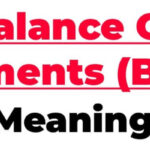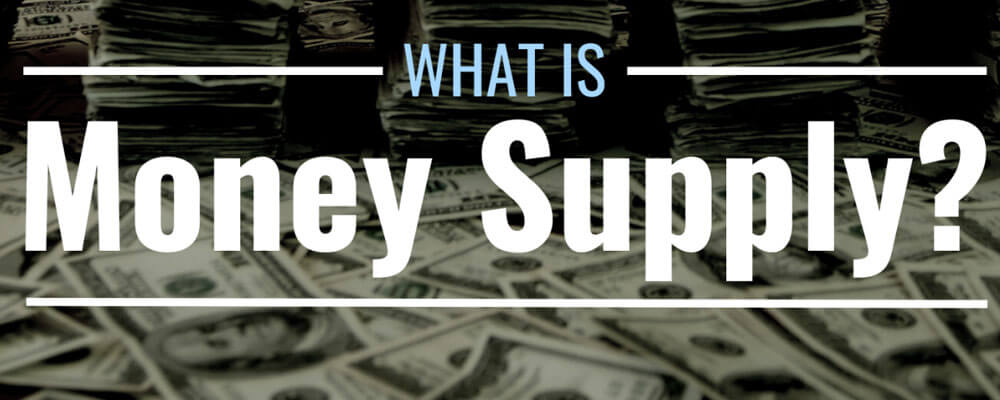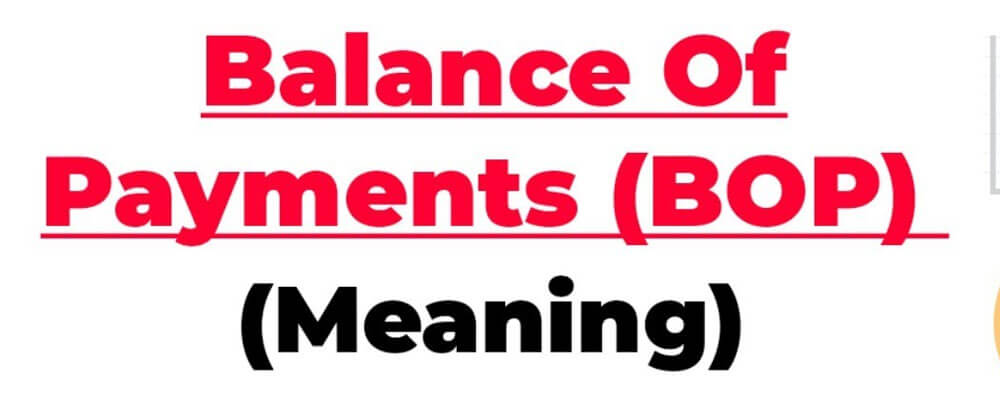Deflation is an economic phenomenon characterized by a sustained decrease in the general price level of goods and services within an economy over a period of time. It is the opposite of inflation, where prices typically rise. Deflationary pressures can lead to a variety of economic challenges, impacting consumption, investment, and overall economic activity. Here are different definitions of deflation by various authors:
Table of Contents
ToggleWhat is Deflation | Different Definitions
- Milton Friedman: A situation where the quantity of money available in an economy is in excess of what is needed to transact the volume of business.”
- John Maynard Keynes: A fall in the general level of prices, which is equivalent to an increase in the value of money.
- Irving Fisher: A situation in which the purchasing power of money goes up.
- Ben Bernanke: Sustained deflation can be highly destructive to a modern economy and should be strongly resisted.
- Paul Krugman: Deflation can turn a garden-variety recession, in which deflation is a symptom, into a self-reinforcing, deep depression.
- Hyman Minsky: Deflation and depression are the outcome of episodes in which the economic units must, by income and cash flow accounting, liquidate a portion of their liabilities in order to validate the nominal value of their assets.
- Lionel Robbins: Deflation is that state of the economic system where the circulating medium is in excess of the amount required.
- The Federal Reserve: A general decline in prices, often caused by a reduction in the supply of money or credit.
These definitions collectively highlight that deflation is not merely about falling prices but is often associated with broader economic implications, such as reduced consumer spending, increased real debt burdens, and challenges for businesses. Preventing and addressing deflation is a key concern for policymakers aiming to maintain economic stability and growth.
Different Causes of Deflation
Deflation, the sustained decrease in the general price level of goods and services in an economy, can arise from a variety of factors. Understanding the causes of deflation is crucial for policymakers, economists, and businesses to implement effective measures to prevent or mitigate its impact. Here are detailed explanations of the key causes of deflation:
-
Decrease in Consumer Spending:
When consumers anticipate lower prices in the future, they may delay their purchases, leading to a reduction in overall demand for goods and services.
Reduced consumer spending contributes to an oversupply of goods, prompting businesses to lower prices to stimulate demand.
-
Reduction in Business Investments:
In a deflationary environment, businesses may become hesitant to invest in new projects or expand operations due to expectations of diminishing returns.
Lower business investments can result in decreased economic activity, job creation, and overall productivity.
-
Government Austerity Measures:
Governments implementing austerity measures, such as reducing public spending and increasing taxes, can contribute to deflation.
Austerity measures may lead to a decrease in government-funded projects and social spending, causing a decline in overall economic activity.
-
Advances in Technology and Productivity:
Technological advancements that lead to increased productivity can contribute to deflation by causing oversupply in the market.
Improved efficiency in production processes can reduce costs, prompting businesses to lower prices to remain competitive.
-
Globalization’s Impact on Prices:
The interconnectedness of global markets can lead to increased competition, especially in industries with low barriers to entry.
As companies from different countries compete, they may lower prices to gain market share, contributing to deflationary pressures.
-
Changes in Resource Availability:
Fluctuations in the availability and prices of key resources, such as oil or raw materials, can impact production costs.
A decrease in resource prices can lead to lower production costs, prompting businesses to lower prices, contributing to deflation.
-
Debt Deflation:
Falling prices can increase the real burden of debt, impacting consumer spending and business investments.
As the real value of debt rises, borrowers may cut back on spending, contributing to a cycle of decreasing demand and falling prices.
-
Banking Crises:
Financial instability, such as banking crises, can lead to a credit crunch, reducing the availability of loans for businesses and consumers.
A lack of credit can hinder economic activity, leading to decreased demand and falling prices.
-
Credit Crunch:
A reduction in the availability of credit due to tighter lending standards or risk aversion by banks can contribute to deflation.
Businesses and consumers may face challenges in obtaining financing, leading to decreased spending and economic activity.
These causes are often interconnected, creating a complex web of factors that contribute to deflationary pressures. Policymakers must carefully analyze the specific circumstances in each case to implement targeted measures to address and prevent deflation. Additionally, the psychological impact of deflationary expectations can exacerbate these factors, leading to a self-reinforcing cycle of falling prices and economic contraction.
Different Types of Deflation
Deflation, characterized by a sustained decrease in the general price level of goods and services, can manifest in different forms based on its underlying causes and economic context. Here are several types of deflation, each with its own characteristics and implications:
-
Demand-Pull Deflation:
Demand-pull deflation occurs when the overall demand for goods and services falls relative to their supply. It is often caused by a decline in consumer spending, business investments, or government expenditures.
Causes: Factors such as high levels of consumer debt, economic uncertainty, or restrictive monetary and fiscal policies can lead to a reduction in demand.
Effects: Businesses respond by reducing prices to stimulate demand, but if prices continue to fall, it may lead to a deflationary spiral.
-
Cost-Push Deflation:
Cost-push deflation results from a decrease in the cost of production, leading to a reduction in the prices of goods and services. This type is often associated with improvements in productivity, technological advancements, or decreases in the cost of raw materials.
Causes: Technological innovation, increased efficiency, or a decline in resource prices can contribute to lower production costs.
Effects: While cost-push deflation can benefit consumers in the short term, it may pose challenges for businesses, leading to reduced profits and potential job losses.
-
Built-In Deflation:
Built-in deflation, also known as wage deflation, occurs when wages decrease or grow at a slower rate than productivity. This can result in lower costs for businesses but may contribute to reduced consumer spending and demand.
Causes: Factors such as high unemployment, labor market shifts, or weakened bargaining power of workers can lead to stagnant or declining wages.
Effects: Businesses may experience improved profit margins, but if widespread, it can lead to a decline in consumer purchasing power, exacerbating deflationary pressures.
-
External Deflation:
External deflation is driven by global factors, such as increased international competition or a global economic downturn. It can impact domestic prices by influencing the supply and demand dynamics of traded goods.
Causes: Globalization, increased competition from emerging economies, or a global recession can contribute to external deflationary pressures.
Effects: Domestic industries may face challenges as cheaper imported goods flood the market, leading to lower prices and potential economic contraction.
-
Debt-Deflation:
Debt-deflation occurs when a high level of debt becomes unsustainable, leading to a reduction in spending and economic activity. Falling prices increase the real burden of debt, creating a negative feedback loop.
Causes: Excessive debt levels, economic downturns, or financial crises can trigger debt-deflation dynamics.
Effects: Businesses and consumers may cut spending to service debt, leading to reduced demand, falling prices, and further economic contraction.
-
Liquidity Trap Deflation:
Definition: In a liquidity trap, interest rates are very low, and consumers and businesses hoard money rather than spending or investing. Monetary policy becomes less effective in stimulating demand.
Causes: Economic uncertainty, pessimism about the future, or a lack of confidence in the effectiveness of monetary policy can lead to a liquidity trap.
Effects: Despite low interest rates, borrowing and spending remain subdued, contributing to deflationary pressures.
Understanding these different types of deflation helps policymakers and economists tailor appropriate responses to address the specific challenges associated with each form. The interplay of these factors can also contribute to a more complex economic landscape, requiring comprehensive and targeted policy measures to combat deflationary pressures.
How to Control Deflation
Controlling deflation is a complex task that requires a combination of monetary, fiscal, and structural policies to stimulate demand, boost economic activity, and prevent a downward spiral of falling prices. Here’s a detailed explanation of various measures that can be employed to control deflation:
-
Monetary Policy Measures:
Interest Rate Policy:
- Central banks can use conventional monetary policy tools, primarily adjusting interest rates, to influence borrowing costs and encourage spending.
- Lowering interest rates makes borrowing cheaper, stimulating consumption and investment.
Unconventional Monetary Policy:
- In a scenario where interest rates are already low, central banks can employ unconventional measures, such as quantitative easing (QE).
- QE involves the purchase of financial assets to increase the money supply and lower long-term interest rates.
Forward Guidance:
- Central banks can provide forward guidance on future policy intentions to influence expectations.
- Clear communication about keeping interest rates low for an extended period can encourage borrowing and spending.
Negative Interest Rates:
- Some central banks may consider implementing negative interest rates, effectively charging banks for holding excess reserves.
- Negative interest rates aim to incentivize lending and discourage hoarding of cash.
-
Fiscal Policy Measures:
Government Spending:
- Governments can implement expansionary fiscal policies by increasing spending on public infrastructure projects, education, and healthcare.
- Increased government spending boosts demand and supports economic growth.
Tax Cuts:
- Implementing tax cuts, especially for households and businesses, increases disposable income and encourages spending and investment.
- Targeted tax incentives can stimulate specific sectors of the economy.
Automatic Stabilizers:
- Automatic stabilizers, such as unemployment benefits and progressive tax systems, provide a counter-cyclical effect during economic downturns.
- These measures automatically increase government support during periods of low economic activity.
-
Structural Reforms:
Labor Market Policies:
- Labor market reforms that enhance flexibility without compromising worker protections can promote job creation and wage growth.
- Policies supporting skills development and retraining can increase workforce productivity.
Product Market Reforms:
- Reforms aimed at reducing barriers to entry, fostering competition, and promoting innovation can improve efficiency in product markets.
- Encouraging entrepreneurship can stimulate economic activity.
Debt Restructuring:
- Policies addressing high levels of private and public debt, such as debt restructuring or forgiveness programs, can alleviate the burden on consumers and businesses.
- Preventing a debt-deflation spiral is crucial.
-
Global Cooperation:
Exchange Rate Policies:
- Coordinated efforts to manage exchange rates can influence trade dynamics.
- A competitive currency can make exports more attractive, boosting economic activity.
International Monetary Cooperation:
- Collaborative efforts among countries to address global imbalances and coordinate policies can be effective.
- Multilateral institutions can play a role in facilitating international cooperation.
-
Inflation Targeting and Expectation Management:
Clear Communication:
- Central banks and policymakers should communicate clearly and transparently about their commitment to preventing and overcoming deflation.
- Providing forward guidance can help shape expectations.
Inflation Targets:
- Central banks may adopt or adjust inflation targets to guide policy decisions.
- Explicit targets provide a framework for managing expectations and anchoring inflation.
-
Financial Stability Measures:
Bank Recapitalization:
- Ensuring the stability of the financial sector is essential. Banks facing solvency issues may require recapitalization to maintain lending.
- Government intervention, if needed, should be targeted and timely.
Credit Support:
- Central banks and governments can provide credit support to businesses, particularly SMEs, to ensure continued access to financing.
- Credit easing measures, such as targeted loan programs, can stabilize the financial system.
-
Adaptive Policy Framework:
Continuous Monitoring:
- Policymakers should continuously monitor economic indicators and adjust policies as needed.
- Flexibility in policy responses is crucial to adapting to changing economic conditions.
Research and Analysis:
- Ongoing research and analysis of economic trends provide policymakers with insights into emerging challenges and opportunities.
- Collaboration with economists, think tanks, and international organizations enhances the quality of policy decisions.
-
Preventive Measures:
Preemptive Action:
- Policymakers should take preemptive measures to avoid falling into a deflationary spiral by using monetary and fiscal tools early in the economic downturn.
- Swift and decisive actions can prevent a prolonged period of falling prices.
Addressing Structural Weaknesses:
- Long-term strategies should address structural weaknesses in the economy, such as low productivity or high levels of inequality, to enhance resilience against deflationary pressures.
Controlling deflation requires a well-coordinated and proactive approach, with policymakers employing a mix of monetary, fiscal, and structural measures. The effectiveness of these measures depends on the specific context and underlying causes of deflation in a given economy. Additionally, collaboration at both domestic and international levels is crucial for a comprehensive and successful strategy against deflationary pressures.
Why Deflation is bad for Economy
Deflation is generally considered harmful to an economy, and several reasons underscore its negative impact:
-
Decreased Consumer Spending:
In a deflationary environment, consumers anticipate falling prices in the future. As a result, they postpone purchases, expecting to buy goods and services at lower prices later.
Reduced consumer spending is detrimental to economic growth, as it constitutes a significant portion of overall demand.
-
Lower Business Profits:
Falling prices lead to lower revenues for businesses, especially if they are unable to cut costs at the same rate. This can result in reduced profit margins.
Lower profits can lead to cost-cutting measures, such as layoffs and reduced investments, further contributing to economic downturn.
-
Increased Real Debt Burden:
Deflation increases the real burden of debt. Even if the nominal value of debts remains constant, the real value of debt rises as prices falls.
Higher real debt burdens can lead to financial distress for individuals, businesses, and governments, potentially causing bankruptcies and defaults.
-
Effect on Wages and Employment:
In a deflationary environment, employers may be reluctant to increase wages, as they expect prices to fall. This can result in stagnant or declining real wages.
Reduced wages can lead to lower consumer spending, contributing to a cycle of decreased demand, lower production, and increased unemployment.
-
Hindered Investment and Economic Activity:
Deflationary expectations can discourage businesses from investing and expanding operations. The anticipation of lower future prices reduces the profitability of investments.
A decline in investment hampers economic activity and can contribute to a prolonged period of economic stagnation.
-
Risks of a Deflationary Spiral:
Persistent deflation can lead to a deflationary spiral, where falling prices lead to lower demand, reduced production, and further price declines.
This negative feedback loop can be challenging to break and may result in long-term economic contraction.
-
Impact on Banking Sector:
Deflation puts stress on the banking sector. As the value of assets held by banks decreases, it can lead to an increase in non-performing loans.
Banks may become more cautious in lending, contributing to a credit crunch and further restraining economic activity.
-
Difficulty for Central Banks:
Traditional monetary policy tools, such as interest rate adjustments, may be less effective in a deflationary environment, especially if interest rates are already near zero.
Central banks may need to resort to unconventional measures like quantitative easing to stimulate the economy.
-
Lack of Pricing Signals:
In a deflationary environment, prices of goods and services are expected to fall, making it challenging for businesses to determine appropriate pricing strategies.
Lack of clear pricing signals can disrupt efficient resource allocation in the economy.
-
Social and Political Consequences:
Prolonged deflation can lead to social and political unrest. Job losses, reduced incomes, and economic uncertainty can contribute to dissatisfaction among the population.
Political instability may arise as people demand solutions to address the economic challenges.
What is Deflation | Causes | Types | How to Control it | PDF Free Download |
No doubt, deflation is considered harmful because it disrupts the normal functioning of the economy, hindering consumer spending, business profits, and overall economic activity. Policymakers typically aim to prevent deflation and, if it occurs, implement measures to reverse its effects and stimulate economic growth.
See Also: What is Inflation | Definition | Importance | Types | Causes | Calculation | Factors










